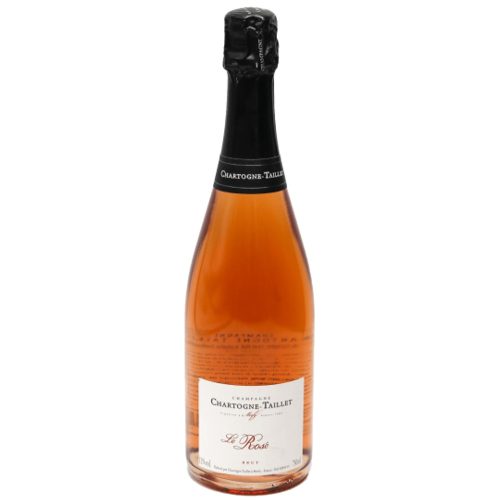The Baron D'Auvergne Champagne house, nestled in Bouzy, in the heart of the Montagne de Reims region, has a history dating back several centuries. They are a small negotiant house, growing and buying grapes. Bouzy is a Grand Cru village, one of the highest-rated vineyards in Champagne, and well known for the quality of its Pinot Noir grapes, perfect for the creation of this cuvee.
The Champagne Baron D'Auvergne Fine Fleur is a Blanc de Noirs, made exclusively from Pinot Noir grapes, and aged on lees for 36 months, resulting in its complex flavors and delicate effervescence. The dosage is only 9 g/l RS, creating a Brut style.
On the nose this Blanc de Noirs Grand Cru reveals a symphony of aromas. Expect notes of ripe red fruits like raspberries, toasted brioche, and a hint of almond. On the palate, it is rich and full-bodied, with a fine mousse and a balanced acidity that brings freshness and a lively character to the wine. The finish is long, with a lingering taste of honeyed fruit and a hint of spice.
Food pairing: Blanc de Noir champagnes have a robust character and complex flavors, which make them versatile companions to rich seafood dishes like lobster or scallops. It also complements the earthy flavors of a mushroom risotto, and for a classic pairing, try it with Comté or Brie cheese.
 The Baron D'Auvergne Champagne house, nestled in Bouzy, in the heart of the Montagne de Reims region, has a history dating back several centuries. They are a small negotiant house, growing and buying grapes. Bouzy is a Grand Cru village, one of the highest-rated vineyards in Champagne, and well known for the quality of its Pinot Noir grapes, perfect for the creation of this cuvee. The Champagne Baron D'Auvergne Fine Fleur is a Blanc de Noirs, made exclusively from Pinot Noir grapes, and aged on lees for 36 months, resulting in its complex flavors and delicate effervescence. The dosage is only 9 g/l RS, creating a Brut style.On the nose this Blanc de Noirs Grand Cru reveals a symphony of aromas. Expect notes of ripe red fruits like raspberries, toasted brioche, and a hint of almond. On the palate, it is rich and full-bodied, with a fine mousse and a balanced acidity that brings freshness and a lively character to the wine. The finish is long, with a lingering taste of honeyed fruit and a hint of spice.Food pairing: Blanc de Noir champagnes have a robust character and complex flavors, which make them versatile companions to rich seafood dishes like lobster or scallops. It also complements the earthy flavors of a mushroom risotto, and for a classic pairing, try it with Comté or Brie cheese.
The Baron D'Auvergne Champagne house, nestled in Bouzy, in the heart of the Montagne de Reims region, has a history dating back several centuries. They are a small negotiant house, growing and buying grapes. Bouzy is a Grand Cru village, one of the highest-rated vineyards in Champagne, and well known for the quality of its Pinot Noir grapes, perfect for the creation of this cuvee. The Champagne Baron D'Auvergne Fine Fleur is a Blanc de Noirs, made exclusively from Pinot Noir grapes, and aged on lees for 36 months, resulting in its complex flavors and delicate effervescence. The dosage is only 9 g/l RS, creating a Brut style.On the nose this Blanc de Noirs Grand Cru reveals a symphony of aromas. Expect notes of ripe red fruits like raspberries, toasted brioche, and a hint of almond. On the palate, it is rich and full-bodied, with a fine mousse and a balanced acidity that brings freshness and a lively character to the wine. The finish is long, with a lingering taste of honeyed fruit and a hint of spice.Food pairing: Blanc de Noir champagnes have a robust character and complex flavors, which make them versatile companions to rich seafood dishes like lobster or scallops. It also complements the earthy flavors of a mushroom risotto, and for a classic pairing, try it with Comté or Brie cheese. Champagne Chartogne-Taillet Rose Brut is a blended Champagne that offers two distinct and successive taste profiles. This wine first enrobes the mouth with a mellow texture, then is long on the palate, leaving a delicate and precise consistency. Le Rosé is a blended Champagne composed of Chardonnay, and red grape varieties (mostly Pinot Noir). The blended red wine comes from one of two plots recognised for the quality of their red-wine grapes. In certain years, from the Orizeaux plot, and since 2017, from the Les Fontaines plot in Saint Thierry. Le Rosé is an exception among the house's wines. It requires more varied oenological work than our single-vineyard Champagnes do. The effect of this addition of red wine to white wine necessitates specific decisions to avoid excess opulence, fruitiness or tannicity.
Champagne Chartogne-Taillet Rose Brut is a blended Champagne that offers two distinct and successive taste profiles. This wine first enrobes the mouth with a mellow texture, then is long on the palate, leaving a delicate and precise consistency. Le Rosé is a blended Champagne composed of Chardonnay, and red grape varieties (mostly Pinot Noir). The blended red wine comes from one of two plots recognised for the quality of their red-wine grapes. In certain years, from the Orizeaux plot, and since 2017, from the Les Fontaines plot in Saint Thierry. Le Rosé is an exception among the house's wines. It requires more varied oenological work than our single-vineyard Champagnes do. The effect of this addition of red wine to white wine necessitates specific decisions to avoid excess opulence, fruitiness or tannicity.